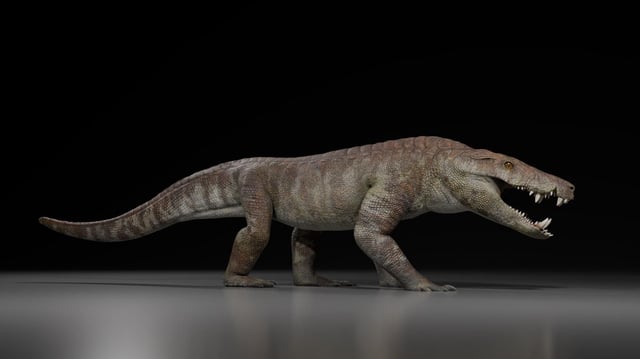Overview
- An international team led by Argentine paleontologists Fernando Novas and Diego Pol formally described the peirosaurid species Kostensuchus atrox.
- The fossil was found at Estancia Anita about 30 kilometers southwest of El Calafate in the Maastrichtian-age Chorrillo Formation, roughly 70 million years old.
- The specimen was preserved in a concretion and includes an exceptionally complete skull and multiple postcranial bones, enabling detailed anatomical study.
- Estimated dimensions include a skull near 50 centimeters and a body exceeding 3 meters, with more than 50 serrated teeth and a powerful bite consistent with hypercarnivory.
- The authors interpret the animal as the second-largest predator currently known from the Chorrillo Formation and likely an apex hunter of small to medium-sized dinosaurs.

